#1st century B.C.
Explore tagged Tumblr posts
Text

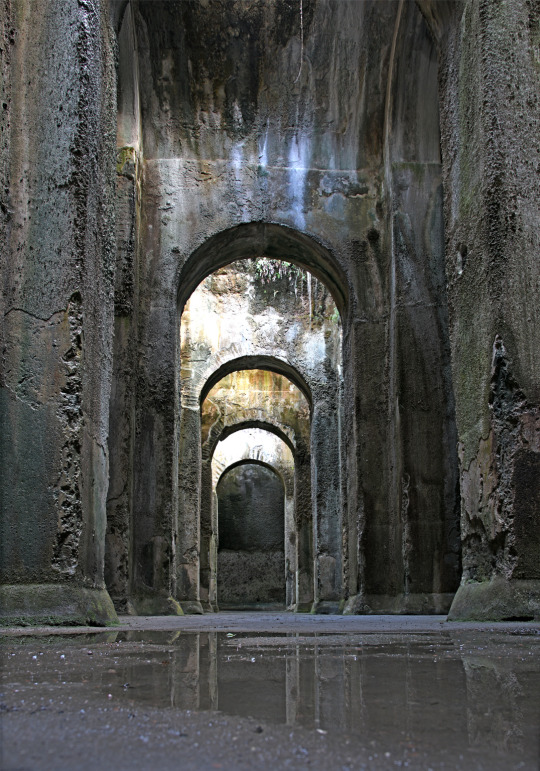

~ Piscina Mirabilis.
Date: Second half of 1st century B.C.
Place of origin: Naples, Piscina Mirabilis
(Napoli, Piscina Mirabilis)
#ancient#ancient art#history#museum#archeology#ancient history#archaeology#Piscina Mirabilis#naples#architecture#1st century B.C.
4K notes
·
View notes
Text



Roman Glass Bowl 1st century B.C. The J. Paul Getty Museum.
#Roman Glass Bowl#1st century B.C.#glass#ancient glass#ancient artifacts#archeology#archeolgst#history#history news#ancient history#ancient culture#ancient civilizations#ancient rome#roman history#roman empire#roman art#blue
2K notes
·
View notes
Text
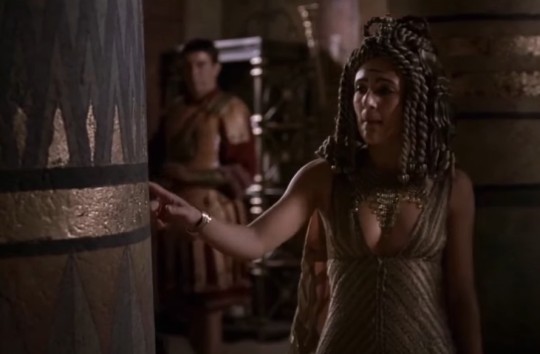
Lyndsey Marshal in Rome (2005–2007) Caesarion as Cleopatra
S1E8
Brutus gets a chilly reception from Servilia when he returns home from Greece. In Egypt, Caesar rebukes the advisers of the boy king, Ptolemy XIII, for their presumption in eliminating Pompey and demands the man who killed him. Caesar decides to intervene in the dispute between Ptolemy and his sister-wife, Cleopatra, to ensure both Rome's grain supply and his own access to Egypt's treasure. Antony, in an unusual show of prudence, advises against this with only half a legion in Alexandria and Cato and Scipio still at large in Africa. Caesar sends Vorenus and Pullo to rescue Cleopatra from house-arrest and escort her to Alexandria. Upon meeting Vorenus and Pullo, the narcissistic, opium-smoking teenage Cleopatra decides that her only hope of survival is to seduce Caesar and she compels Vorenus and Pullo to help smuggle her into the city first by unsuccessfully attempting to seduce Vorenus, but she has better luck with Pullo. Servilia's relationship with Octavia deepens beyond friendship into a passionate lesbian tryst. Caesar is besieged in Alexandra by the Egyptians loyal to Ptolemy. Back in Rome, Antony greets Brutus and Cicero on the floor of the deserted Senate and makes Cicero a promise to kill him if he ever turns against him.
*Julius Caesar was the first Roman to have his face put on a coin.
#Rome#2005#Lyndsey Marshal#Caesarion#S1E8#Cleopatra#tv series#action#drama#romance#period drama#roman era#Julius Caesar#rescue#1st century b.c.#beheadings#just watched
0 notes
Text

Wall painting on black ground - Aedicula with small landscape, from the imperial villa at Boscotrecase (1st century B.C.)
208 notes
·
View notes
Text
Writing Reference: Food History
B.C.
10,000 - almonds, cherries, bread, flour, soup
8,000 - wheat ⚜ 7,000 - wine, beer, pistachios, pig, goat, sheep, lard
6,500 - cattle domestication, apples ⚜ 6,000 - tortilla, dates, maize
5,000 - honey, ginger, quinoa, avocados, potatoes, milk, yogurt
4,000 - focaccia, watermelons, grapes, pomegranates
3,200 - chicken domestication ⚜ 3,000 - butter, onion, garlic, apricots
2,737 - tea ⚜ 2,500 - olive oil, seaweed, duck ⚜ 2,300 - saffron
2,000 - peaches, liquorice, marshmallow, pasta, ham, sesame seeds
1,500 - chocolate, vanilla ⚜ 1,200 - sugar ⚜ 1,000 - mangoes, oats, pickles
900 - pears, tomatoes ⚜ 700 - cinnamon ⚜ 600 - bananas, poppy seeds
500 - artichokes ⚜ 400 - pastries, appetizers, vinegar
300 - parsley ⚜ 200 - turkeys, asparagus, rhubarb ⚜ 65 - quince
1st—13th Century
1st Century - chestnuts, lobster, crab, shrimp, truffles, blueberries, raspberries, capers, kale, blood (as food), fried chicken, foie gras, French toast, omelettes, rice pudding, flan, cheesecake, pears in syrup
3rd Century - lemons ⚜ 5th - pretzels ⚜ 6th - eggplant
7th Century - spinach, kimchi ⚜ 9th - coffee, nutmeg
10th Century - flower waters, Peking duck, shark's fin soup
11th Century - baklava, corned beef, cider, lychees, seitan
12th Century - breadfruit, artichokes, gooseberries
13th Century - ravioli, lasagne, mozzarella, pancakes, waffles, couscous
14th—19th Century
14th Century - kebabs, moon cakes, guacamole, pie, apple pie, crumpets, gingerbread
15th Century - coconuts, Japanese sushi and sashimi, pineapples, marmalade, risotto, marzipan, doughnuts, hot dogs
16th Century - pecans, cashews (in India), Japanese tempura, vanilla (in Europe), fruit leather, skim milk, sweetbreads, salsa, quiche, teriyaki chicken, English trifle, potato salad
17th Century - treacle, pralines, coffee cake, modern ice cream, maple sugar, rum, French onion soup, cream puffs, bagels, pumpkin pie, lemonade, croissants, lemon meringue pie
18th Century - root beer, tapioca, French fries, ketchup, casseroles, mayonnaise, eggnog, soda water, lollipops, sangria, muffins, crackers, chowder, croquettes, cupcakes, sandwiches, apple butter, souffle, deviled eggs
19th Century - toffee, butterscotch, cocoa, Turkish delight, iodized salt, vanilla extract, modern marshmallows, potato chips, fish and chips, breakfast cereal, Tabasco sauce, Kobe beef, margarine, unsalted butter, Graham crackers, fondant, passionfruit, saltwater taffy, milkshakes, pizza, peanut butter, tea bags, cotton candy, jelly beans, candy corn, elbow macaroni, fondue, wedding cake, canapes, gumbo, ginger ale, carrot cake, bouillabaisse, cobbler, peanut brittle, pesto, baked Alaska, iced tea, fruit salad, fudge, eggs Benedict, Waldorf salad
20th Century
1901 - peanut butter and jelly ⚜ 1904 - banana splits ⚜ 1905 - NY pizza
1906 - brownies, onion rings ⚜ 1907 - aioli
1908 - Steak Diane, buttercream frosting ⚜ 1909 - shrimp cocktail
1910 - Jell-O (America's most famous dessert)
1910s - orange juice ⚜ 1912 - Oreos, maraschino cherries, fortune cookies
1912 - Chicken a la King, Thousand Island dressing
1914 - Fettuccine Alfredo ⚜ 1915 - hush puppies
1917 - marshmallow fluff ⚜ 1921 - Wonder Bread, zucchini
1919 - chocolate truffles ⚜ 1922 - Vegemite, Girl Scout cookies
1923 - popsicles ⚜ 1924 - frozen foods, pineapple upside-down cake, Caesar salad, chocolate-covered potato chips
1927 - Kool-Aid, s'mores, mayonnaise cake ⚜ 1929 - Twizzlers
1930s - Pavlova cakes, Philly cheese steak, Pigs in blankets, margaritas, banana bread, Cajun fried turkey ⚜ 1931 - souffle, refrigerator pie
1933 - chocolate covered pretzels ⚜ 1936 - no-bake cookies
1937 - Reubens, chicken Kiev, SPAM, Krispy Kreme
1938 - chicken and waffles ⚜ 1939 - seedless watermelon
1941 - Rice Krispies treats, Monte Cristo sandwiches ⚜ 1943 - nachos
1946 - chicken burgers, tuna melts, Nutella ⚜ 1947- chiffon cake
1950s - chicken parm, Irish coffee, cappuccino, smoothies, frozen pizza, diet soda, TV Dinners, ranch dressing ⚜ 1951 - bananas foster
1953 - coronation chicken ⚜ 1956 - German chocolate cake, panini
1957 - Quebec Poutine ⚜ 1958 - Instant ramen noodles, crab rangoon, lemon bars ⚜ 1960s - beef Wellington, green eggs and ham, red velvet cake
1963 - black forest cake ⚜ 1964 - Belgian waffles, Pop Tarts, Buffalo wings, ants on a log, pita bread ⚜ 1965 - Gatorade, Slurpees
1966 - chocolate fondue ⚜ 1967 - high fructose corn syrup
1970s - California rolls, pasta primavera, tiramisu ⚜ 1971 - fajitas
1975 - hicken tikka masala ⚜ 1980 - turducken
1980s - Panko, portobello mushrooms, bubble tea, chicken nuggets, Sriracha, Red Bull energy drink, everything bagels
1990s - artisan breads, Jamaican jerk ⚜ 1991 - turkey bacon, chocolate molten lava cake, earthquake cake ⚜ 1993 - broccolini
1995 - Tofurkey ⚜ 1997 - grape tomatoes
21st Century
2002 - flat iron steak, tear-free onions ⚜ 2007 - Kool-Aid pickles, cake pops
2008 - Mexican funnel cake ⚜ 2013 - cronuts, test tube burgers
Source ⚜ Writing Notes & References
#food#writing reference#writeblr#dark academia#spilled ink#literature#writers on tumblr#writing prompt#studyblr#poetry#poets on tumblr#light academia#writing inspiration#creative writing#writing inspo#food history#writing ideas#writing resources#history
386 notes
·
View notes
Text

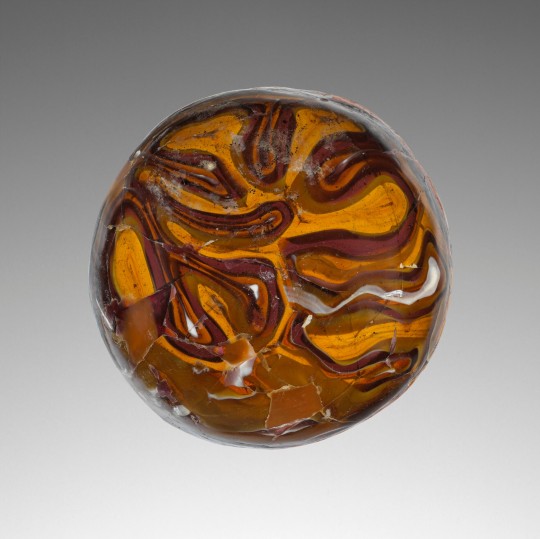


Roman glass bowl, end of 1st century B.C–1st century A.D
During the Roman Imperial period, the popularity of elite objects sculpted from colorful stones such as agate and onyx led to the development of a market in glass replicas. These affordable alternatives were cast or blown from multi-colored canes of glass and imitated expensive natural stones. Here, an ancient craftsman has created an abstract version of agate using brown and white glass.
To make the bowl, the artist heated a rod of multicolored glass and laid the molten glass onto a flat surface, spiraling it into the center in a serpentine pattern. While heating in a kiln, the glass would fuse slowly--each curve melding into the next--until it became one large, colorful disk. After brief cooling, the disk was placed atop a hemispherical mold and heated again, until it slumped into a bowl shape. In the final step, the completed bowl entered an annealing oven to cool slowly, a process that kept the glass from shattering.
Text by The J. Paul Getty Museum.
Public domain pictures. Getty's Open Content Program.
541 notes
·
View notes
Text
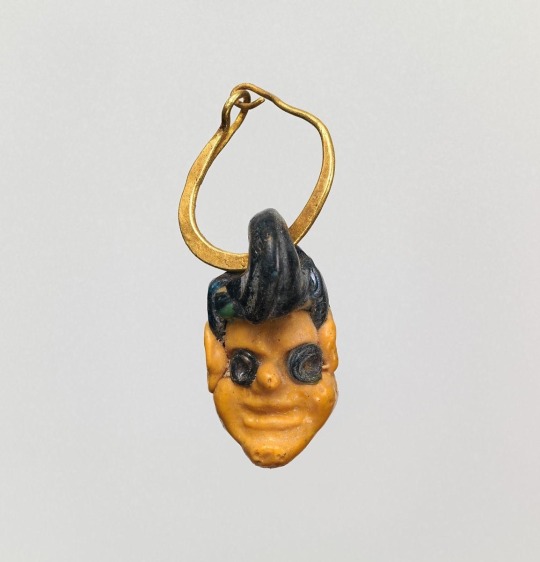
Gold earring with glass head pendant 3rd–1st century B.C. Phoenician or Carthaginian
2K notes
·
View notes
Text
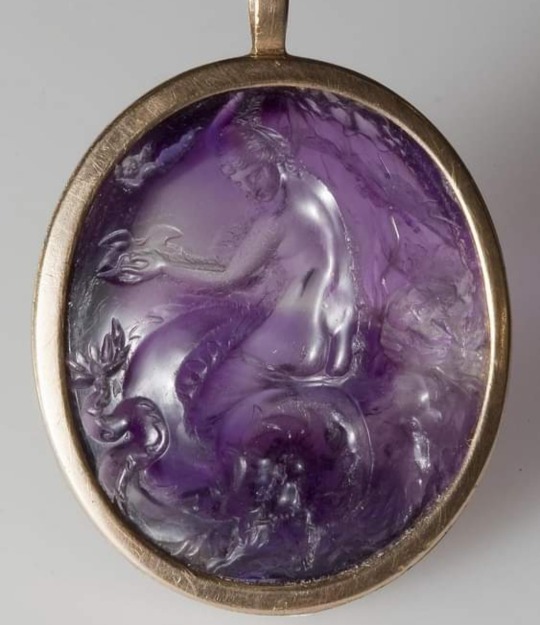
Amethyst Intaglio Circa 1st Century, B.C. - A.D. Roman, Possibly Carved by Master Gem Carver, Dioscurides, Who Was The Favorite Gem Carver Of Emperor Augustus
Source: Archeology and The Ancient Worlds via Facebook/Meta
#amethyst#intaglio#ancient jewelry#precious gemstones#high jewelry#luxury jewelry#fine jewelry#fine jewellery pieces#dioscurides#emperor augustus
477 notes
·
View notes
Text


16/11/24
Marble statue of Aphrodite
Roman, Imperial period, 1st or 2nd century A.D. Copy or adaptation of a Greek statue of the 3rd or 2nd century B.C.
The goddess of love is shown as though surprised at her bath. Originally, her arms reached forward to shield her breasts and pubis in a gesture that both concealed and accentuated her sexuality.
Statues of Aphrodite in the nude proliferated during the Hellenistic period. All were inspired to some degree by the Aphrodite of Knidos, created in the fourth century B.C. by the famous Greek sculptor Praxiteles. That statue, the first major Greek work to show the goddess nude, was celebrated throughout antiquity. This work has the same gesture of modesty and is similar to another Roman copy, the so-called Medici Venus, which has stood in the Tribuna of the Uffizi Gallery in Florence since 1688.
#photographers on tumblr#original photography#dark academia#dark academia aesthetic#classic academia#classic academia aesthetic#chaotic academia#chaotic academia aesthetic#art#greek mythology#cottagecore#cottagecore aesthetic#cottage aesthetic#dark cottagecore#nature photography#nature#naturecore#nature aesthetic#gardencore#earthcore#fairycore#fairy aesthetic#softcore#soft aesthetic#autumn#autumncore#autumn aesthetic
54 notes
·
View notes
Text
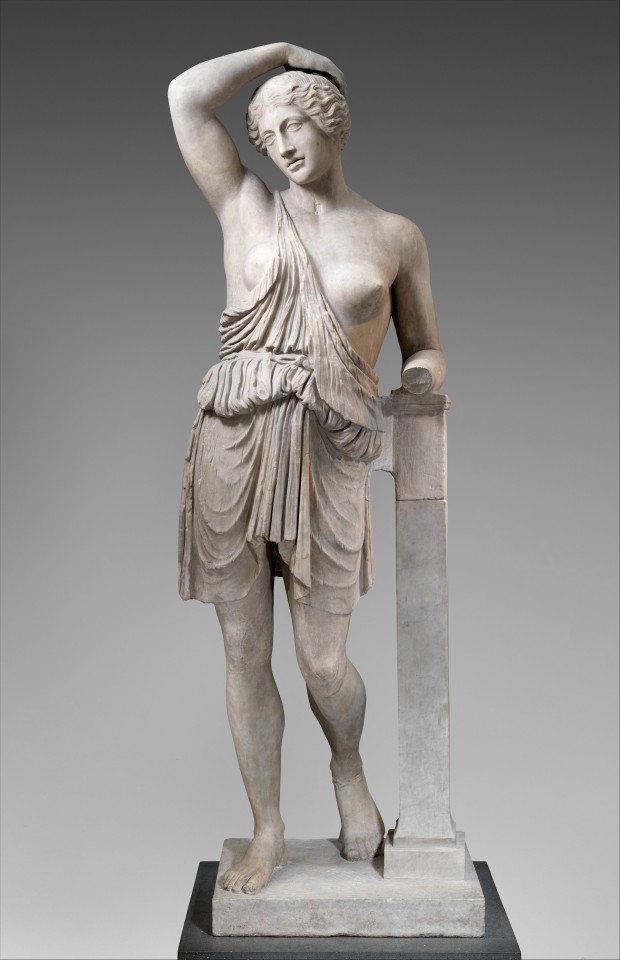
Marble statue of a wounded Amazon. Roman 1st–2nd century CE. x
In Greek art, the Amazons, a mythical race of warrior women from Asia Minor, were often depicted battling such heroes as Herakles, Achilles, and Theseus. This statue represents a refugee from battle who has lost her weapons and bleeds from a wound under her right breast. Her chiton is unfastened at one shoulder and belted at the waist with a makeshift bit of bridle from her horse. Despite her plight, her face shows no sign of pain or fatigue. She leans lightly on a pillar at her left and rests her right arm gracefully on her head in a gesture often used to denote sleep or death. Such emotional restraint was characteristic of classical art of the second half of the fifth century B.C. The original statue probably stood in the precinct of the great temple of Artemis at Ephesos, on the coast of Asia Minor, where the Amazons had legendary and cultic connections with the goddess. The Roman writer Pliny the Elder described a competition held in the mid-fifth century B.C. between five famous sculptors, including Phidias, Polykleitos, and Kresilas, who were to make a statue of an Amazon for the temple. This type of statue is generally associated with that contest.
444 notes
·
View notes
Text

Belt clasp
Caucasus, ca. 1st–2nd century CE
In the late second millennium B.C., the tradition of lively animal-ornamented bronzes begins in the Caucasus region. Stylized animals with small waists, arched necks and backs are seen on numerous bronze tools including axes and pins, and are found in Georgia, Armenia, Azerbaijan, and the Northern Caucasus by the beginning of the Late Bronze and Early Iron ages.
148 notes
·
View notes
Text
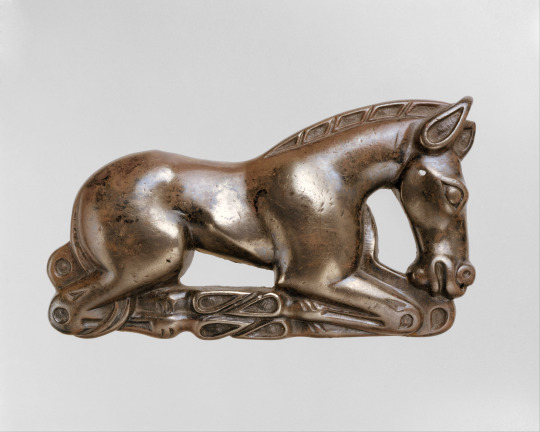
臥馬紋銀帶飾
~ Belt Plaque in the Shape of a Crouching Horse.
Date: 3rd–1st century B.C.
Culture: North China
Medium: Silver
#ancient#ancient art#history#museum#archeology#ancient history#archaeology#belt plaque#crouching horse#horse#china#chinese#asian#asian art#3rd century B.C.#1st century B.C.
656 notes
·
View notes
Text

A Roman Bronze Romping Dog Circa 1st Century B.C.-1st Century A.D.
#A Roman Bronze Romping Dog#Circa 1st Century B.C.-1st Century A.D.#bronze#bronze statue#bronze sculpture#ancient artifacts#archeology#archeolgst#history#history news#ancient history#ancient culture#ancient civilizations#ancient rome#roman history#roman empire#roman art#ancient art
1K notes
·
View notes
Text
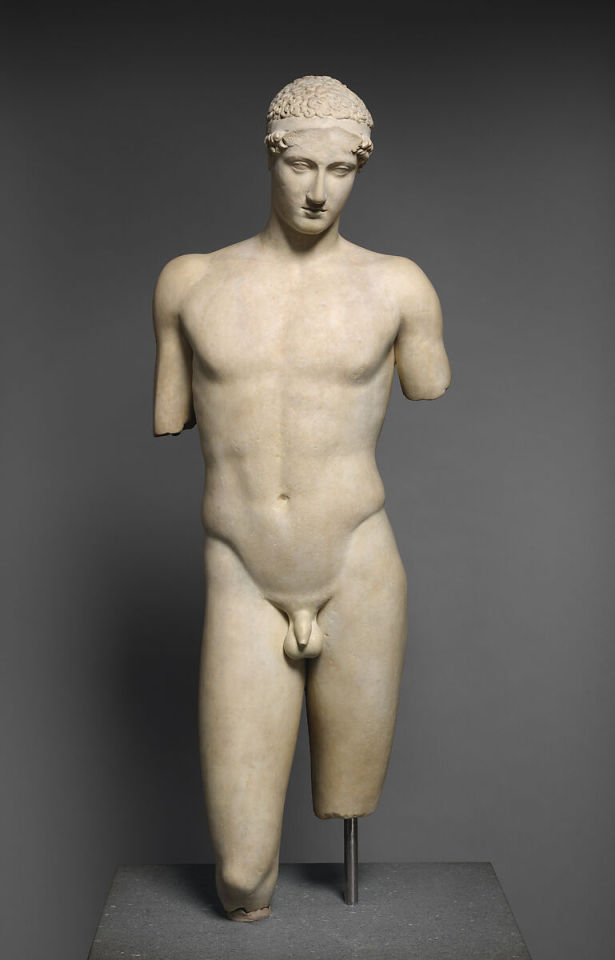

Stephanos Athlete, Roman, Early Imperial, Date late 1st century B.C. or 1st century A.D
#stephanos athlete#ancient art#ancient sculpture#marble sculpture#art history#roman art#roman history
268 notes
·
View notes
Photo


Sardonyx cameo with Cupid crowning Venus, in a gold mount with an openwork enamel frame
Roman, 1st century B.C. (cameo); French, c. 1660 (frame)
Royal Collection Trust
#Happy Valentine's Day!#Cupid#Venus#heart#Ancient Rome#cameo#sardonyx#gold#openwork#enamel#French#flowers#tulips#fritillaries#roses#Royal Collection Trust#ancient art#Roman art#sculpture
689 notes
·
View notes
Text
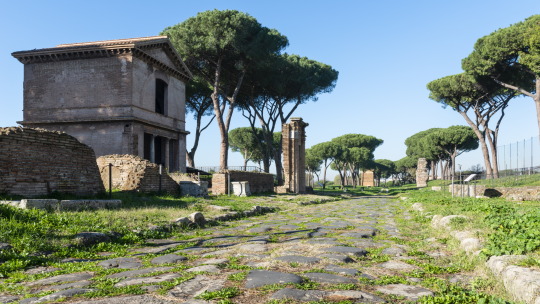
Antigua Via Latina / The ancient Via Latina
In the middle of the Roman periphery, between the modern Via Appia and Via Tuscolana, a section of the 3rd mile of the ancient Via Latina is preserved in perfect condition.
It has ancient origins: the natural route, already followed in prehistoric times, was used by the Etruscans to colonise Campania in the 8th-6th centuries BC.
Definitely laid out by the Romans around the IV-III centuries B.C., it connected Rome with Capua, maintaining its importance throughout Antiquity. In fact, even in the Middle Ages, it was preferred as an access road to Naples because of its better preservation compared to the Appian Way and the presence of a number of Christian places of worship along the route..
Entering the Archaeological Park of the Tombs of the Via Latina, it is now possible to walk along a section of the original paving of the street. With a pleasant walk you can admire the rich tombs dating back to the I-II century A.D. that overlooked the route, which still have perfectly preserved polychrome decorations on the façades and inside: vaults covered with painted plaster and stucco, walls frescoed with funerary scenes and rich mosaic floors are still substantially intact in their original context.
From the street it is also possible to reach the Basilica of S. Stefano, a rare example of an early Christian building erected under the pontificate of Leo the Great in the middle of the 5th century.
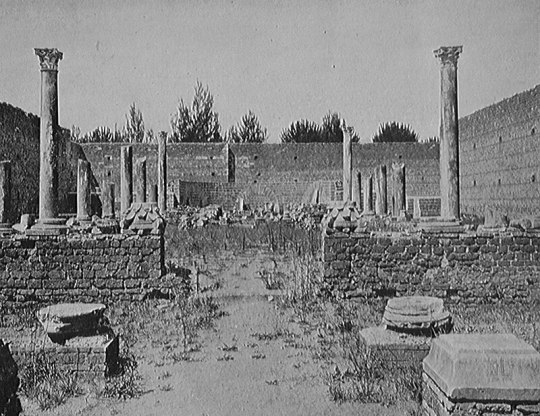
Santo Stefano en Vía Latina, restos parcialmente reconstruidos, 1911.
Santo Stefano in Via Latina, partially reconstructed remains, 1911.
The Archaeological Park of the Tombs of the Via Latina was created in 1879 following the acquisition by the State of a vast area in which important remains from Roman times had been discovered.
BARBERINI TOMB
The so-called Barberini Sepulchre, or Sepulchre of the Corneli. The funerary monument, dating from the 2nd century AD, consists of two above-ground floors and a hypogeum in an excellent state of preservation. The upper floor is covered by a ribbed vault completely covered with plaster painted with a red background and stucco elements. Groups of figures, winged victories on chariots, love affairs, birds, marine animals, mythological themes and architectural backgrounds can be recognised.
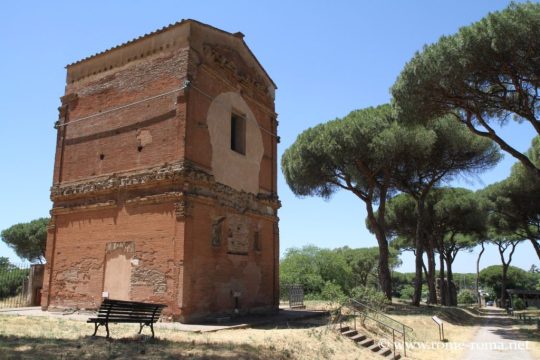
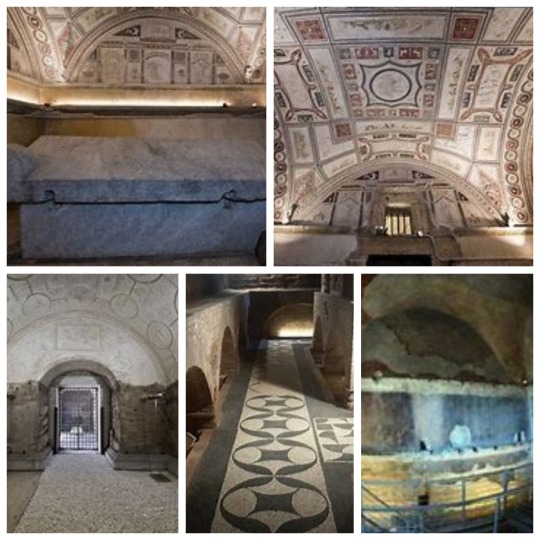
Sepulcro Barberini y su interior / Barberini Tomb and its interior
TOMB OF THE VALERI
The Tomb of the Valeri. The richly decorated underground rooms dating from the mid-2nd century AD are preserved, while the elevation is a hypothetical reconstruction dating from the mid-19th century. An elaborate white stucco covering, articulated in 35 medallions and panels, adorns the lunettes and the barrel vault of the underground room. The medallions depict Dionysian themes, female figures and sea animals, while in the central tondo there is a delicate-veiled figure on the back of a griffin, representing the deceased being carried to the afterlife.


Tumba de los Valeri, exterior e interior / Tomb of the Valeri, exterior and interior
THE TOMB OF THE PANCRATII
The Tomb of the Pancratii. Much of the visible structure is a modern construction that protects the monument below by resting on the original 1st-2nd century AD walls, about a metre high. Upon entering the tomb, one can admire the beautifully decorated underground rooms, with mosaics on the floors and vaults and walls frescoed in bright colours and stucco in an excellent state of preservation. They depict mythological scenes, natural and architectural landscapes, images of women and animals. In the centre of one of the underground chambers is a large sarcophagus for two Greek marble depositions.

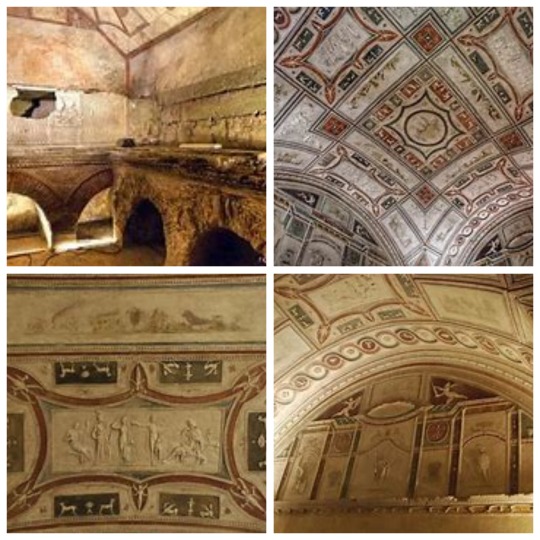
Sepulcro de los Pancracios, exterior e interior / Tomb of the Pancracios, exterior and interior
81 notes
·
View notes